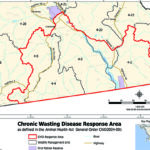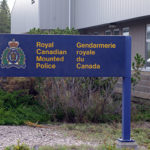Home »

Rocky Mountain Sunrise Gold

By Dan Hicks
With a golden glow on the southeastern horizon, the natural splendour that is the Rocky Mountain Trench awaits the rising sun in our season of long nights, as observed from the Eager Hill trail in the Cranbrook Community Forest.
The iconic scene is notable for the absence of any visible artificial lighting, the stronger manifestations of which are eroding the natural night sky elsewhere in the rural East Kootenay. Cityscapes aside, radiant rural beacon lighting insidiously imitates a conventional urban night sky, and the natural glow of neither sunrise nor sunset holds any cachet for those who delight in dwelling under an artificial luminosity suitable for a private airport.
Yet the sight of the sun rising over the Rockies from Eager Hill may be sufficiently alluring over time that, re-imaging Cranbrook in 2070, I envision that, on its summit, the equinox sunrise point and the two solstice sunrise points will be demarcated by a standing stone array as they have been by Penticton’s sunset-aligned Penhenge since 2010; but with Eager Hill attracting an even larger number of astro-nature enthusiasts, though not quite as many as Stonehenge itself.
Standing astride a flat heel stone atop Eager Hill, a Kootenay-Henge observer would gaze eastward to three tombstone-like stone markers aligned with the equinox sunrise point of March and September, and the solstice sunrise points of June and December. Cran-Henge or KimCran-Henge aka KC Henge are possible alternative names, we have a whole half-century to decide. My K-Henge concept itself aligns with my other fantastical futuristic community forest activity ideas such as college-directed public telescopic starry natural night sky astronomy sessions (see my December 2019 “Three Worlds of the Morning Star” article – search “zubenelgenubi” on this website).

The ambitious highflying crepuscular birds in my Rockies sunrise glow photograph are common ravens (Corvus corax), departing their nighttime roosts in the dawn twilight so as to enjoy a full day of scavenging from a buffet laid out by we – their profligate human friends – well-mashed roadkill on the highways below them being their preferred plat du jour. Of the 52 bird species which the Rocky Mountain Naturalists recorded in their 2019 Cranbrook Christmas Bird Count, common ravens were our most numerous bird species by far – they like us.
So perhaps, should Graven Green Greta’s apocalyptic prognostications come true (and well they might), there will be a solitary satiated raven somewhere who, while surveilling a ghastly ghost city from atop a charcoal snag, momentarily reflect upon our ignoble demise and utter a lamentacious “nevermore” to the ashen wind.
Besides the dependably incredible daredevil antics displayed here this January in the annual Banff Mountain Film Festival (ie Wildsight’s six-hour outdoor action movie marathon – eg Antarctic icefield crevasse-dodging kite-skiing), there were also some insightful environmental moments.
The documentary Into the Canyon about a backpacking adventure through the Colorado River’s Grand Canyon in Arizona featured a brief sequence of the Milky Way’s unique spectral radiance amid a star-emblazoned night sky bounded by precipitous walls, likely filmed in Grand Canyon National Park itself. Closer to home last summer, besides hosting three telescopic Star Parties at Logan Pass, Glacier National Park (Montana) opened the Glacier National Park Astronomical Observatory in Saint Mary. Meanwhile, here in the southern East Kootenay, BC Parks offered nothing of the kind but, ever the optimist, I envision that, at the latest, this will surely be remedied by the summer of 2120 – a century hence.

Under clear winter skies, Planet Venus remains our bright Evening Star in the southwestern sky. Darkened in the January 9 evening electricity outage, Cranbrook became a city illuminated by moonlight with Venus shinning as an unrivalled lamp above our western horizon. As for the moon itself, our first full moon of the year – the Wolf Moon – will be at its fullest on January 10 at 12:21 MST when the moon is below our southern horizon; accordingly, the fullest moonset will be in the morning in the northwest at 08:41 and the fullest moonrise will be in the evening in the northeast at 17:05. Enlivening January by howling at the Wolf Moon may be alluring to the lupine souls among us, but Luna herself will likely be hidden within snowy wintry clouds.
Though the long overdue cessation of our collective biannual time-switching depravity will be welcomed, I dread our being plunged into long dark winter mornings with the adoption of year- round Daylight Saving Time. Admittedly, winter DST would facilitate more people viewing a golden sunrise over the Rockies, but rather than distorting our clock so that our civil time noon is markedly different from our actual solar noon, whether winter or summer, those who wish to experience either the dawn itself or maximize their daylight hours, can simply arise from their beds earlier – a seemingly radical concept, but actually a largely forgotten age-old lifestyle choice which recognizes that our limited time on Planet Earth cannot ever be “saved” by warping our civil time.
Incidentally, on January 10, Cranbrook’s solar noon occurs at 12:50 MST civil time when the sun is highest in our sky (19 degrees up) as it crosses our north-south longitudinal meridian which Timeanddate.com has designated as 115 degrees and 45 minutes West Longitude; combined with the website’s latitudinal designation for us of 49 degrees and 31 minutes North Latitude, the geographic center of our municipal universe lies not at city hall, but is instead situated some 400 meters east of Save-On-Foods, precisely where many of us had secretly suspected it lay all along.
In the predawn of January 6 (05:19 MST), a seven-second fireball plunged down through our atmosphere over Mount Assiniboine, flaming eastward to Calgary where it vaporized completely while still at a high altitude. International Meteor Organization Fireball 119-2020 was noted by eight observers (seven in Alberta & one in B.C.) whose reporting made the triangulation of its trajectory possible; five observers were in Calgary, to the north – one each in Rocky Mountain House and Red Deer, and to the south – an early rising Rocky Mountain Naturalist observer east of Kimberley.
Our protective atmosphere triumphed once again; without it, all those space rocks which our sun-orbiting planet encounters proximal to its leading longitudinal night-to-day sunrise solar terminator line, would eventually convert our verdant terrestrial landscape into a moonscape. Imagine though an inbound fireball being a precursor to the dreaded Martian invasion; in these times of our higher leadership being no more than nominal, how on Earth could we in good faith comply with the supreme little green goblin’s universal customary request – “take us to your leader”? (always refer to multi-headed Martians as “they”). Mars will become prominent this autumn, making its closest approach on October 6 when it reigns in its full Red Planet glory high in the constellation Pisces (the two fishes) at a radiant minus 2.6 magnitude.
 Lead image: Sunrise glow over the Rockies, looking southeast from Eager Hill trail in the Cranbrook Community Forest; November 29th, 2019, 07:50 MST. The Steeples are prominent on the left. Dan Hicks photo
Lead image: Sunrise glow over the Rockies, looking southeast from Eager Hill trail in the Cranbrook Community Forest; November 29th, 2019, 07:50 MST. The Steeples are prominent on the left. Dan Hicks photo

Sources: Glacier National Park Conservancy bulletins 2019; Fireballs.imo.net; Rockymountainnaturalists.org (Blog); Observer’s Handbook 2020 Royal Astronomical Society of Canada; SkyNews Magazine Jan-Feb 2019; Timeanddate.com; & Wikipedia.com.









